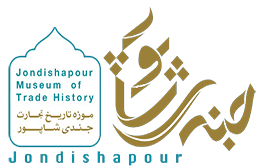Pottery-making is an art that has preserved its valuable technical principles in its traditional forms up to now. Studying these objects precisely, one could not only appreciate their artistic values but also understand the crafts, industries, the material works of various tribes and communities in various cultural territories. According to these facts, potteries should be recognized and valued as the expression of mental activities, creativity and artistic inventions of the man in the past since the pottery-making is a collective art that not only shows the taste of its creators but also reveal certain signs of the social life as well as material and spiritual characteristics of a life over a certain period of time through which we can directly get to know the civilizations of cities, ethnic groups and life conditions of various periods since every nation has been using its specific signs, pictures, and decorations for decorating its potteries.
As a craft, the pottery-making has perpetuated in Iran from the early days of its civilization up to now. It has witnessed various changes over this long period of time. According to Ghirshman, the French archeologist, some people were living in Bakhtiari Mountains around 10,000 years ago who were not only engaged in hunting and preparing foodstuffs but also they were busy with making potteries. Their products that are regarded as the beginning of the pottery-making industry in Iran by most of the archeologists, are valuable works to study. As Arthur Pope has asserted in its seminal work entitled “A Survey of Persian Art”, evidence discovered recently prove that agriculture and its related industries such as making jars, weaving and pottery-making began in the Persian Plateau.
The evolutionary path of pottery-making in the ancient mounds quickly brought the early settlers to the understanding that they could meet their needs through potteries. Potteries are the best works remained after the primitive communities. Particularly in civilizations of the Persian Plateau, different stages of ancient civilizations have been named after these potteries such as the gray potteries of northern civilizations, brownish potteries of western civilizations, and painted potteries of the Elamite civilization.

